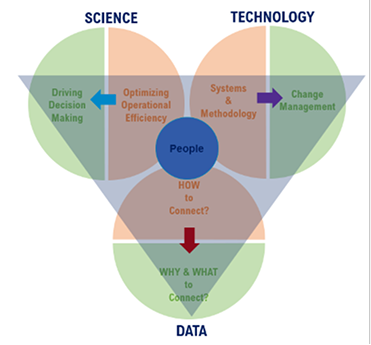Single-Cell Omics Unveils the Hidden Symphony of Life
Imagine peering into the heart of a cell, witnessing the intricate dance of its molecular machinery. This is the power of single-cell omics analysis, a revolutionary approach that's transforming our understanding of biology and disease. Traditionally, biological analyses have been performed on bulk populations of cells, masking the unique molecular signatures of each cell. Single-cell omics breaks through this limitation, revealing the hidden symphony of gene expression and function occurring within a single cell. At Zifo, we offer cutting-edge tools and expertise to guide you on this exciting exploration.
A Cellular Revolution: Unveiling Hidden Heterogeneity
For decades, biologists studied cells as homogenous populations. However, single-cell analysis shatters this illusion. It allows us to examine individual cells, revealing a symphony of diverse gene expression patterns within seemingly uniform tissues. This newfound understanding has profound implications:
- Unveiling Hidden Cell Types: We can now discover rare or previously unknown cell populations crucial for development, regeneration, and disease progression.
- Mapping Cellular Landscapes: We can now discover rare or previously unknown cell populations crucial for development, regeneration, and disease progression.By analyzing gene expression patterns across a tissue section, spatial omics paints a detailed picture of how cells interact and organize within their microenvironment.
Challenges and Opportunities: Harnessing the Power of Omics Data
This revolution comes with its own set of challenges. Single-cell experiments generate massive amounts of complex data. Analyzing this data effectively requires robust bioinformatics tools and expertise. Here at Zifo, we understand these complexities and offer:
- Advanced Bioinformatics Pipelines: Our state-of-the-art pipelines seamlessly process and analyze your data, extracting meaningful insights.
- Expert Guidance: Our team of bioinformatics specialists and consultants collaborates with you every step of the way, interpreting the data and translating it into actionable knowledge.
The Power of Single-Cell Multiomics Integration: A More Complete Picture
The human body is an intricate web of interconnected systems. By integrating data from multiple omics platforms (e.g., RNA sequencing, protein analysis, metabolomics), Zifo helps you paint a more complete picture of cellular function. This multi-modal approach allows us to:
- Connect Genotype to Phenotype: Understand how genetic variations influence cellular behavior and disease processes.
- Identify Novel Therapeutic Targets: Discover new pathways and molecules critical for disease development, paving the way for targeted therapies.
Analyzing the Symphony: A Step-by-Step Guide
Single-cell omics analysis involves several key steps:
- Sample Preparation:The quality of your data hinges on careful sample preparation. Zifo offers optimized protocols for a variety of cell and tissue types.
- Data Acquisition: Using advanced technologies like next-generation sequencing and imaging platforms, we capture the molecular signatures of individual cells or spatial locations within a tissue.
- Data Preprocessing: Our bioinformatics experts clean and filter the raw data, ensuring its accuracy and consistency.
- Data Analysis: Advanced computational methods are used to identify cell populations, analyze gene expression patterns, and visualize the relationships between heterogeneous cells within tissues.
- Integration and Interpretation:Zifo's team helps you integrate data from multiple sources and translate the findings into a biological context, uncovering hidden insights into cellular function and disease mechanisms.
Unlocking the Potential of Your Research with Zifo
At Zifo, we are passionate about empowering researchers to unlock the secrets of single-cell omics analysis. Our comprehensive suite of services includes:
- Expert Consultation:Discuss your research goals and tailor our analysis solutions to meet your specific needs.
- Cutting-Edge Technology: Access to the latest single-cell omics platforms ensures the highest quality data acquisition.
- In-Depth Bioinformatics Analysis: Our team of bioinformatics specialists will guide you through every step of data analysis and interpretation.
- Data Visualization and Reporting: We create clear and compelling visualizations to showcase your findings and facilitate communication with collaborators or stakeholders.
A More Detailed Look into the Various Aspects of Single-Cell Omics Processes
- Preprocessing:
- Quality Control: This is the first and crucial step. Raw data from sequencing machines might contain errors or artifacts. Techniques like filtering out low-quality cells, correcting for technical biases, and normalizing the data for sequencing depth ensure data integrity.
- Normalization: Normalizing the data accounts for differences in sequencing depth across cells. This ensures that variations in gene expression reflect biological differences rather than technical artifacts.
- Dimensionality Reduction:
- High-Dimensional Data: Single-cell data typically measures thousands of genes per cell, making it high-dimensional and difficult to visualize or analyze directly. Techniques like Principal Component Analysis (PCA) or t-distributed Stochastic Neighbor Embedding (t-SNE) are used to reduce the dimensionality and identify the most informative features for further analysis.
- Cell Clustering:
- Grouping Similar Cells: Clustering algorithms group cells with similar gene expression patterns together. This helps identify distinct cell populations within the data. Common clustering algorithms include k-means clustering and hierarchical clustering.
- Markers and Annotation: Once cell clusters are identified, researchers can use known marker genes to assign identities to these clusters (e.g., specific cell types). Databases and prior biological knowledge are crucial for this step.
- Differential Gene Expression (DGE):
- Identifying Differences: This step aims to identify genes that are differentially expressed between different cell clusters. This can reveal genes specific to certain cell types or genes involved in cellular processes. Statistical tests are used to identify these differentially expressed genes.
- Visualization:
- Visual Exploration: Throughout the analysis, various visualization techniques are used to explore the data and communicate findings. Heatmaps, scatter plots, and t-SNE plots are some popular tools to visualize cell clusters, gene expression patterns, and relationships within the data.
Additional Considerations:
- Data Integration:If data from multiple modalities (e.g., RNA sequencing and protein abundance data) is available, it can be integrated to gain a more comprehensive understanding of the cells.
- Trajectory Analysis: This advanced approach allows researchers to reconstruct the developmental or differentiation paths of cells within a population.
- Machine Learning:Machine learning algorithms are increasingly being used for tasks like cell type identification, prediction of cell states, and uncovering complex relationships within the data.
Tools and Resources:
Several software tools and resources are available for single-cell analysis, including:
- Seurat: A popular R package specifically designed for single-cell RNA-seq analysis.
( https://satijalab.org/publications/ ) - Cell Ranger: A software suite for analyzing single-cell and spatial omics data from 10x Genomics.
(https://www.10xgenomics.com/support/software/cell-ranger/latest/analysis/inputs/cr-inputs-overview) - Bioconductor: An open-source software project for bioinformatics that includes packages for single-cell analysis. (https://www.bioconductor.org/)
- Kallisto - (https://pachterlab.github.io/kallisto/)
- UMAP - (Dimensionality reduction for visualizing single-cell data using UMAP | Nature Biotechnology)
- UMI-tools - ( https://github.com/CGATOxford/UMI-tools)
- Scanpy, in python ( https://buff.ly/3URCbfn)
In addition to the above tools, there are several other open-source tools, scripts and packages which are coming online and published at a rapid pace transforming single-cell omics analysis.
Embrace the Future of Omics Research
Single-cell omics analysis is revolutionizing our understanding of complex biological processes. At Zifo, we are your partner in this exciting journey. With our expertise and cutting-edge technology, you can unlock the hidden symphony of life within your research and advance the frontiers of scientific discovery.
Ready to embark on this exciting journey? Contact Zifo today at info@zifornd.com and let's discuss how we can help you harness the power of single-cell and spatial omics analysis!



